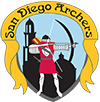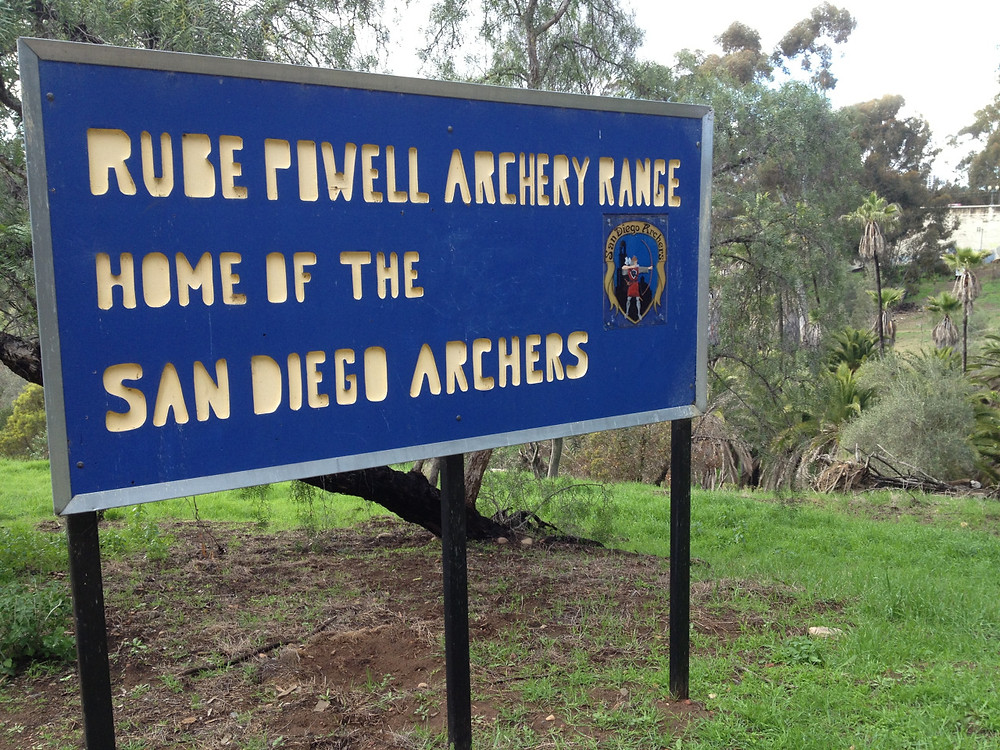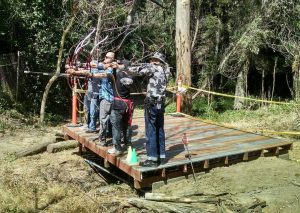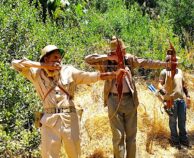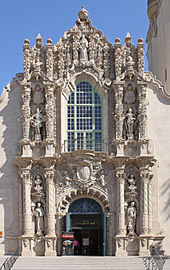The Rube Powell Archery Range, by Jim Baker, October 2020
The Rube Powell Archery Range, in San Diego, is located within the Nation’s largest urban park, Balboa Park.
Note the Park’s proximity to the Downtown area of San Diego. The range is located adjacent to the Air & Space Museum
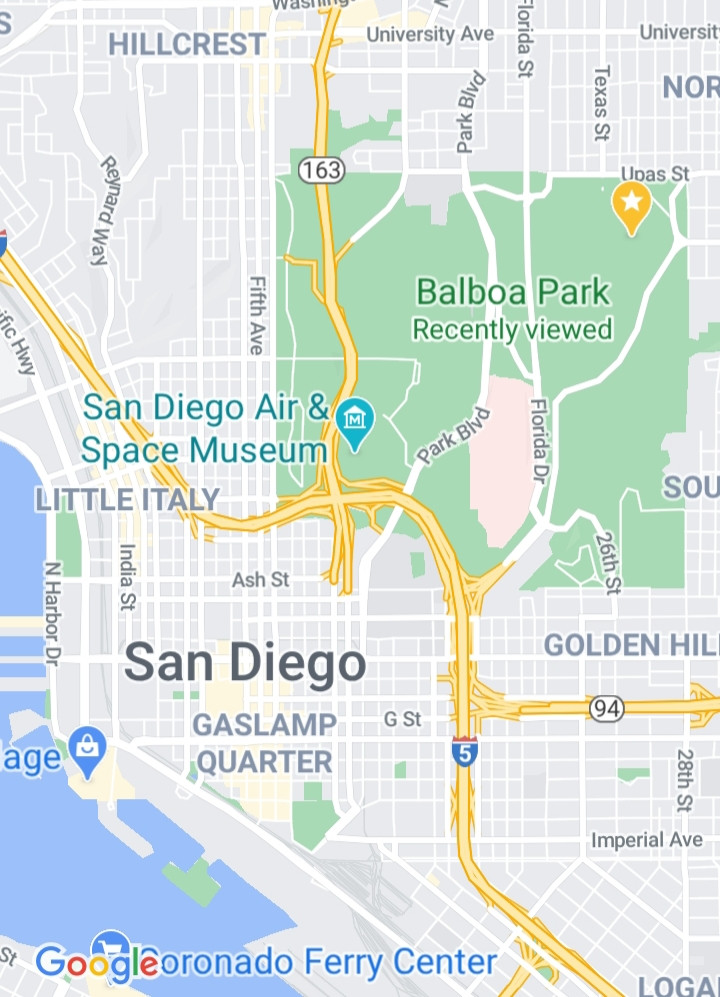
Set aside by early Civic leaders in 1868, it wasn’t developed until 1913 in preparation for the Panama California Exposition of 1915. Celebrating the opening of the Panama Canal, the Exposition, was San Diego’s way to invite everyone in the U.S. to come and experience San Diego and the sights of the Exposition. It was basically a world fair, showcasing San Diego. Museums were built and filled, reproduction Indian villages and old west towns were constructed. There was even a nudist colony behind high fences that could be seen on a limited basis. Originally built, to last only a couple of years, the Exposition Grounds are largely in tact today and considered one of San Diego’s gems.
On this cover, are seen the Cabrillo Bridge, the California Tower and Plaza, along with a portion of the Fair Grounds.
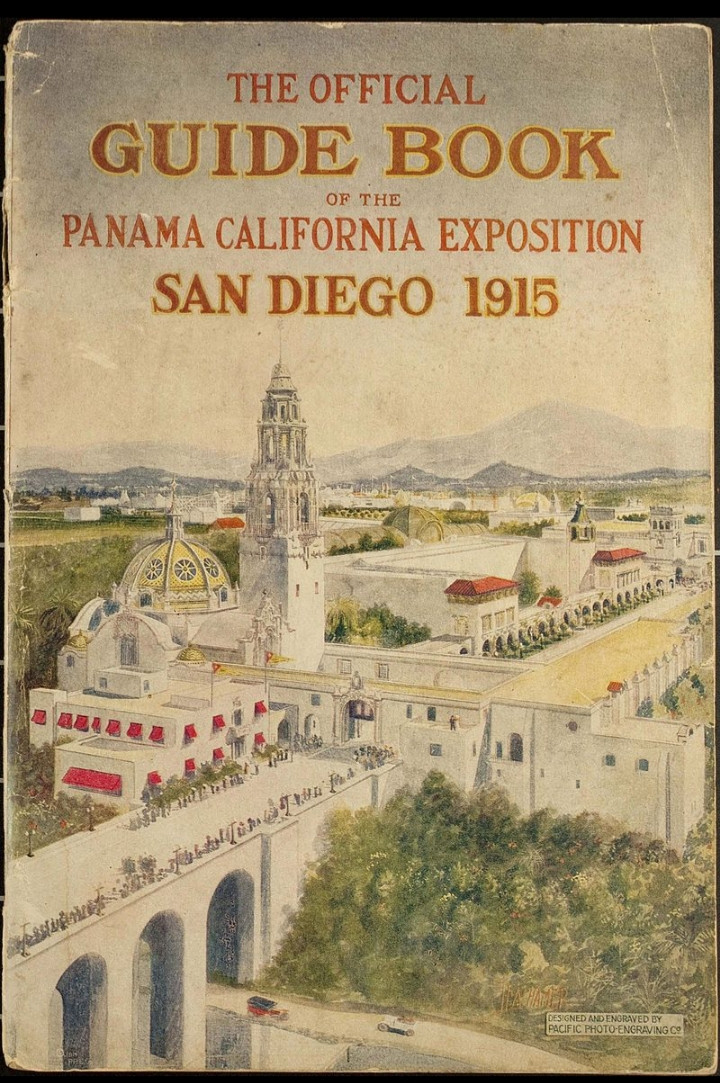
Back to 1913, when those museums were looking to get filled. Joseph Jessop, local jeweler and immigrant from England was among San Diego’s elite class.
Jessop in 1914 on his personal range
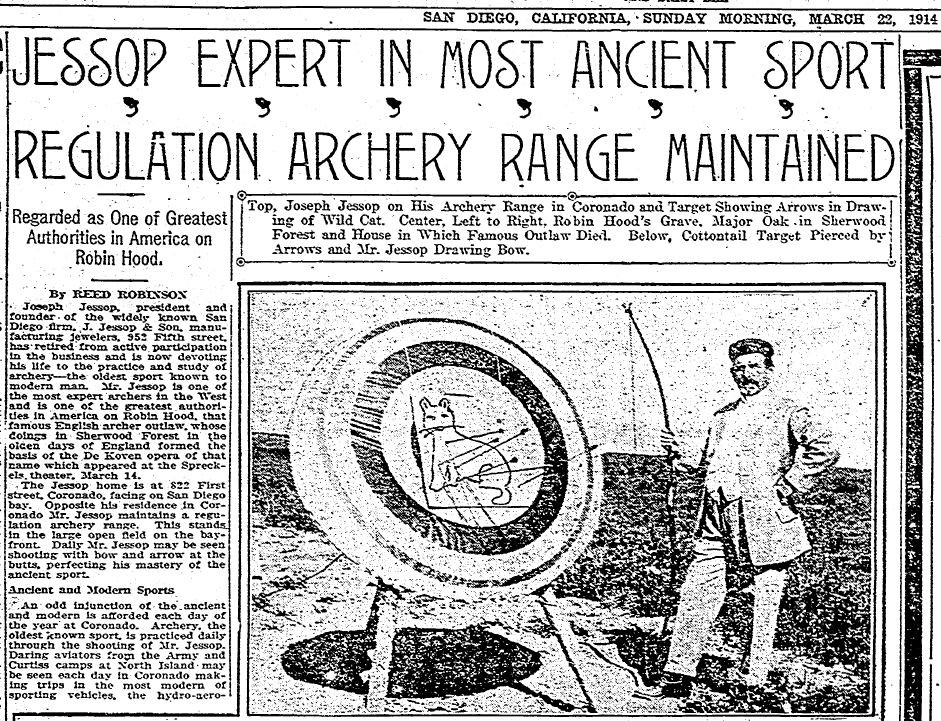
He had a passion for archery and had amassed the world’s largest collection of primitive archery and weapons. He offered his collection for viewing during the Exposition and asked in return for an archery range to be set up in the park. He got his range and was overseer for many years. It was a small area for practicing and exhibiting with a building for young boys to build archery equipment.
Joseph Jessop
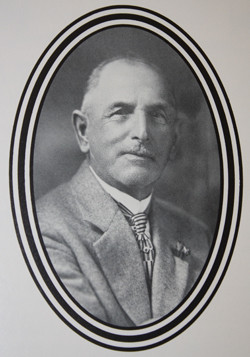
Later in 1925, a small group of archery enthusiasts petitioned the Park Board to establish San Diego’s first archery club and hold contests within the Park. Their request was approved and target archery was established on the large flat lawns of the Park. In a letter to Joseph Jessop they asked him to become their very first president. Jessop asked to have his name put down as a member and gave them free use of his name to influence the future success of the club. Very soon thereafter, and for years to come, many of San Diego’s most recognized names became members. Archers from all the world visited Balboa Park for the chance to shoot with the San Diego Archery Club.
Early Picture of the San Diego Archery Club and visitors
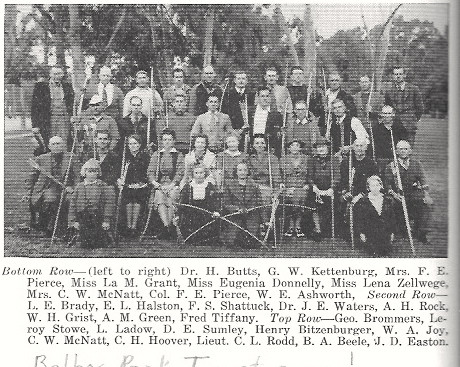
Cortland (Corky) Johnson, 5-time State Instinctive Champion and builder of, Custom by Corky, line of bows. He’s seen here on the lawns of Balboa Park and the San Diego Archery Club – Note the California Tower in the background
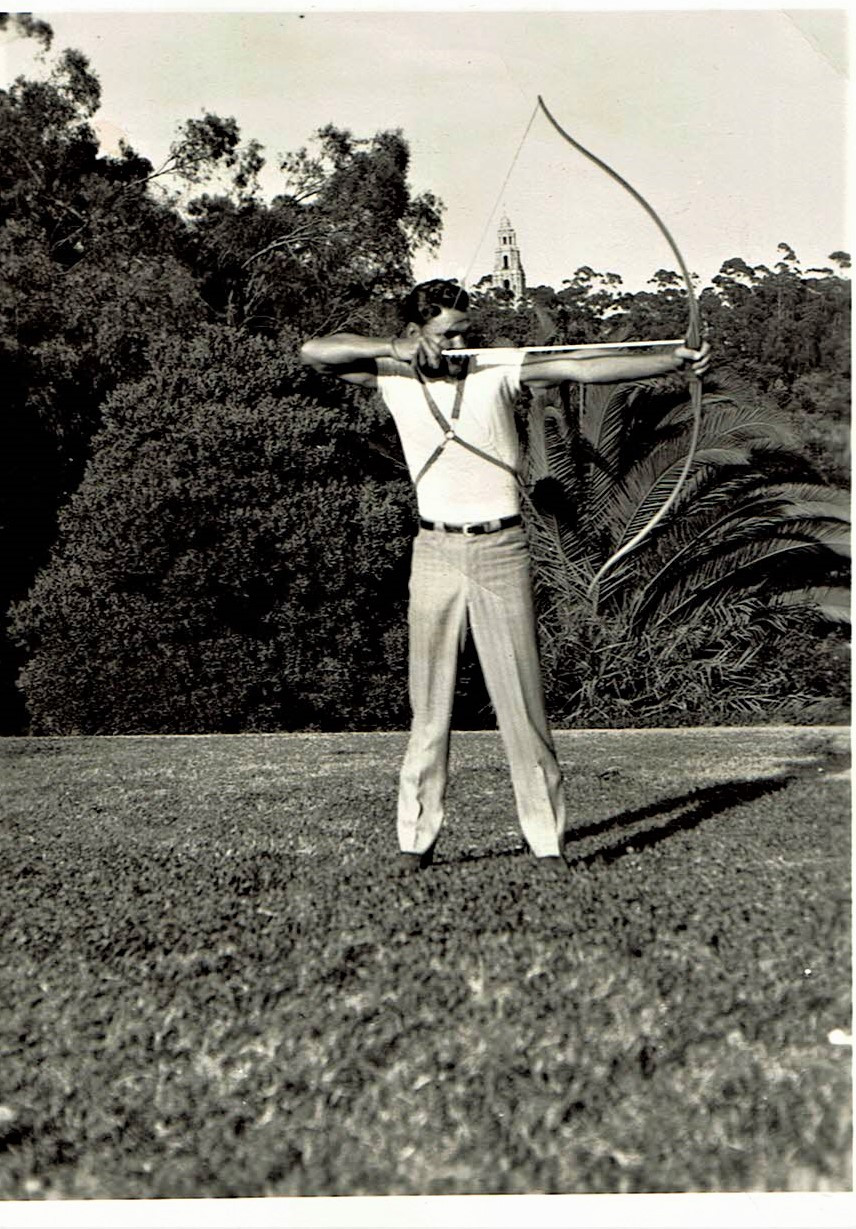
Then in 1938, field archers asked for their own range and were given an area formerly used as a reproduction old West town called Gold Gulch. Known as the San Diego Field Archers, they operated in Gold Gulch for roughly twenty years.
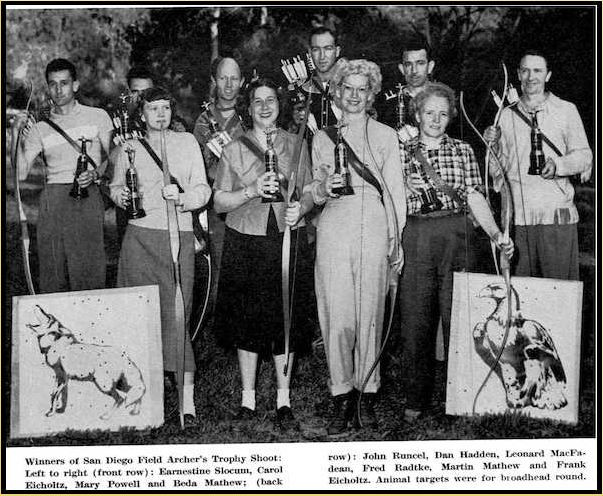
Out of this group came names such as, Frank Eicholtz, Mart and Beda Mathews, Harry Drake, Corky Johnson and Rube Powell. Around 1960, the Park relocated the Field Archers to their current location about 1000 yards away near the Cabrillo Bridge.
Around the same time, park officials determined that target archery had become too hazardous, at its location on the lawns, and they were relocated to the Morley Field Target Range, still inside Balboa Park.
Sometime after this, the Target and Field Archers merged, forming a single club called San Diego Archers.
San Diego Field Archers in Gold Gulch addressing a target butt
On the right, is Hall of Fame recipient Roy Dill
Formerly known as, the Balboa Park Archery Range, the San Diego Archers decided to change the name, in the mid-90’s to, The Rube Powell Archery Range.
The name change honors, former San Diego Field Archer and 5-time NFAA National Champion, Rube Powell. Just two years after picking up his first bow, Rube won his first national championship.
Reuben Powell 5-Time NFAA Freestyle Champion
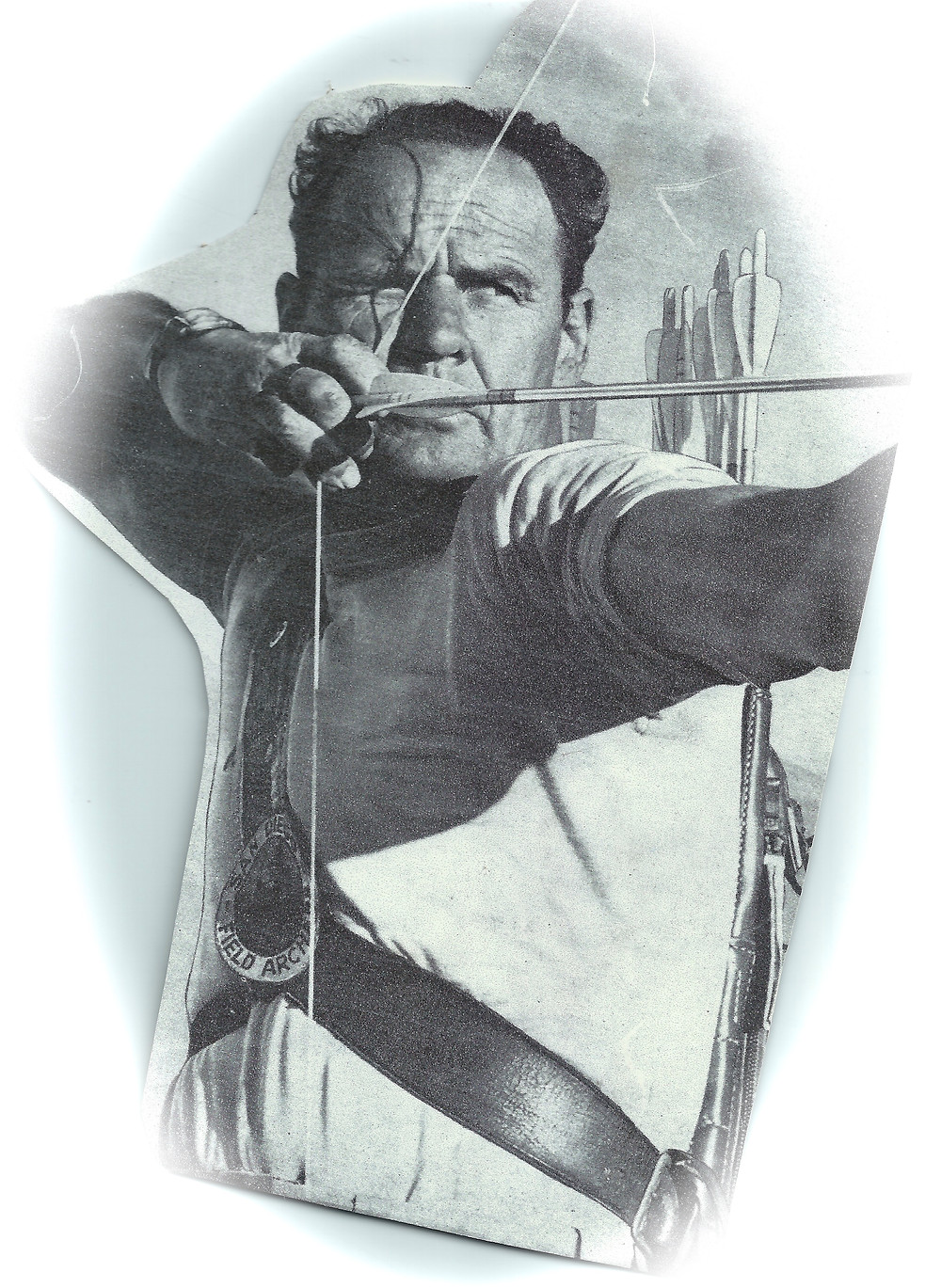
With his wife Mary, an accomplished archer herself, they promoted and advanced the sport of archery for decades. Rube had the recognition and influence that comes with being a 5-time champ
and Mary had the brains to use this influence to its full potential.
Rube and Mary Powell
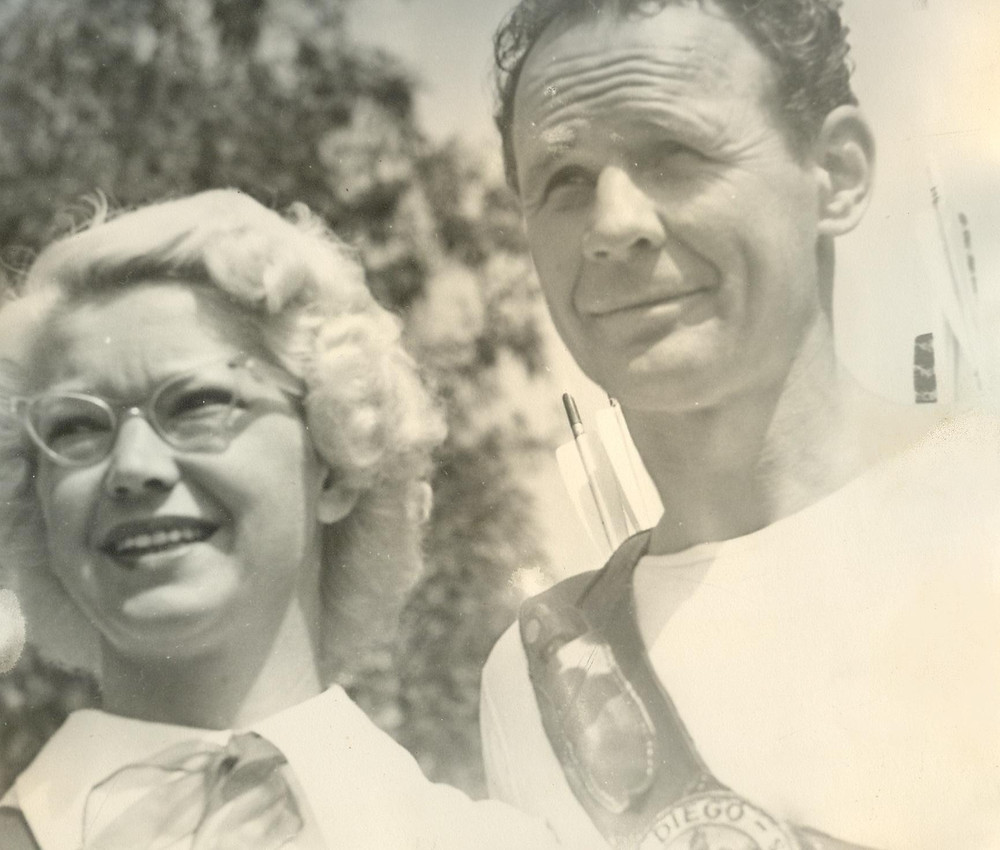
Today, the San Diego Archers enjoy an increasing membership and growing participation from the surrounding communities. Archers still come from all over the country to visit the Rube Powell Archery Range.
San Diego Archer, Roy Pelkey, pulls arrows and calls out scores at 3D event on the Rube Powell Archery Range – The California Tower is seen in the background
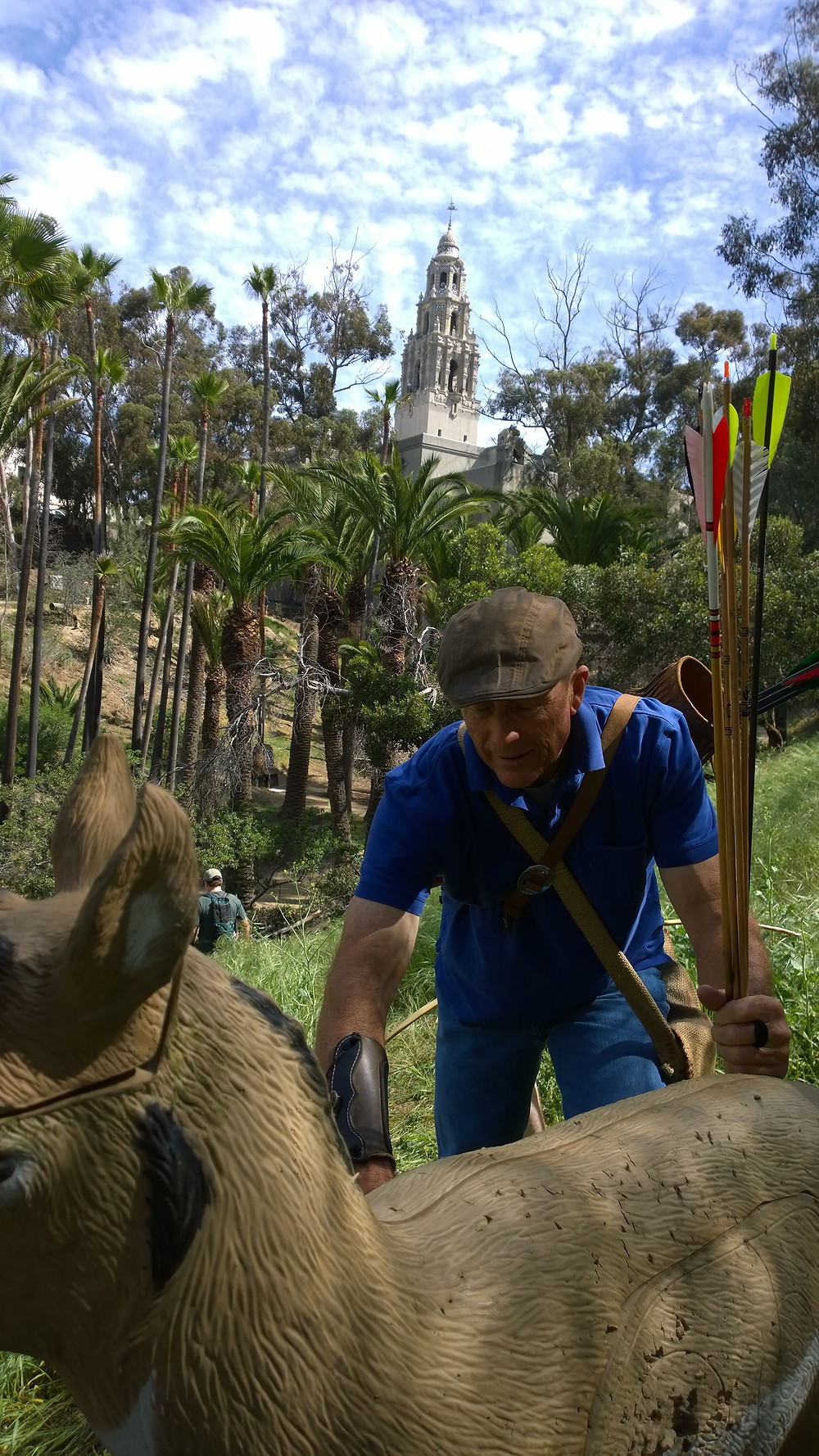
Archers await their turn in the shadow of the Cabrillo Bridge
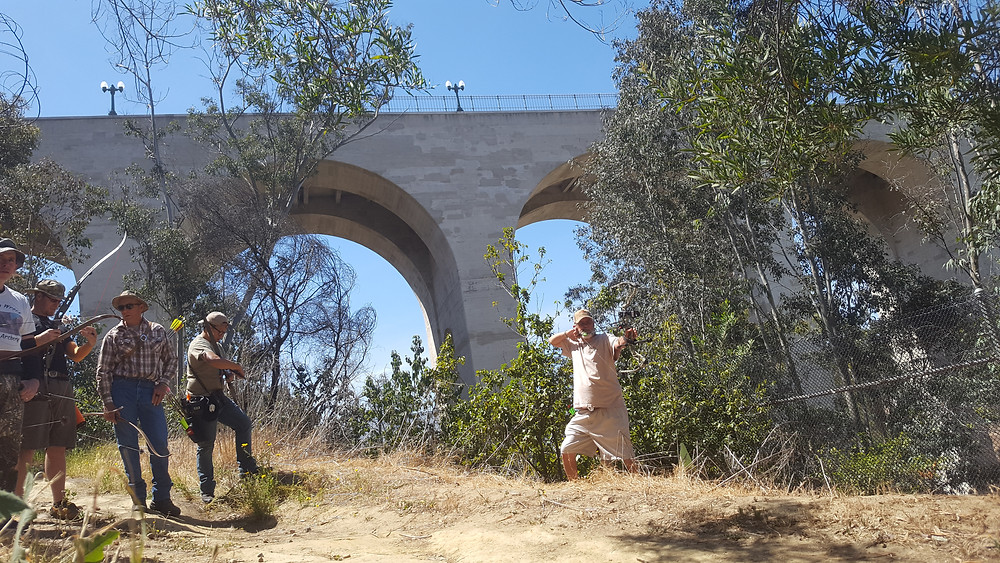
The San Diego Archers host each year:
- Ten 3D’s
